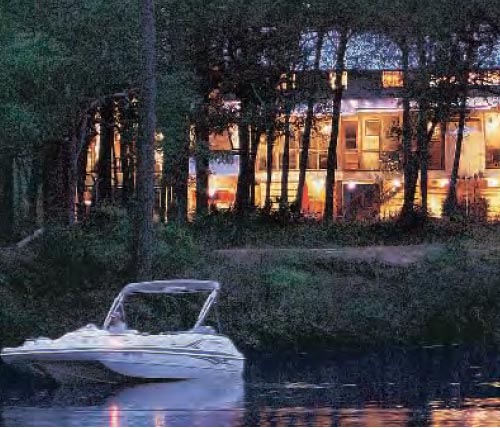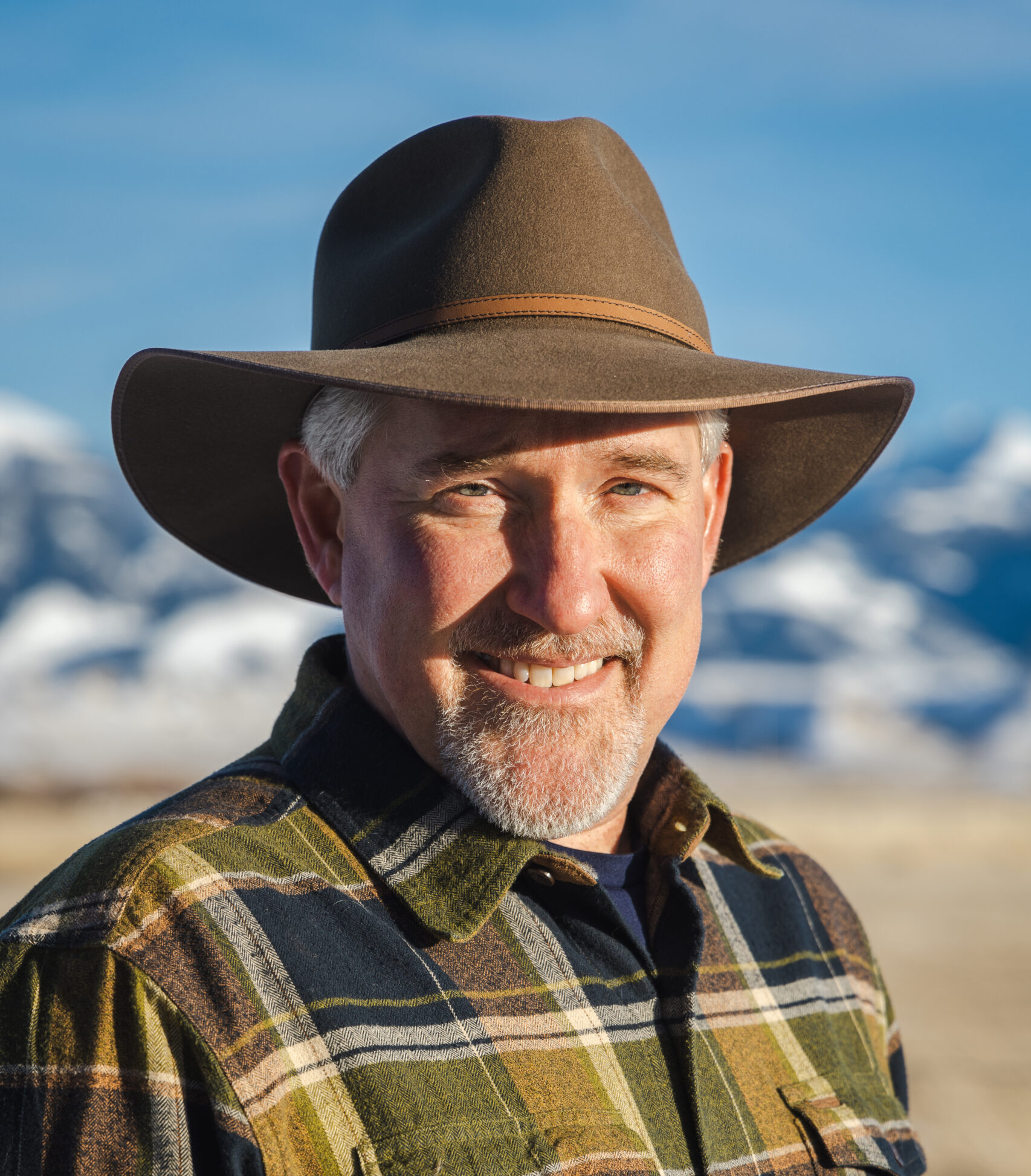
Like most residents of North Florida, I’ve followed the high-profile transformation of St. Joe from one of the state’s oldest timber and paper companies to a sophisticated real estate development business known for creating places that capture the amenity value of diverse ecosystems. More recently, I became a part of that transformation, signing on with the company as a vice president and a subscriber to the notion that commerce and conservation can co-exist.
The St. Joe story, however, does not begin with the environment. It begins with one of America’s oldest business families. In the 1920s, after a falling out with his cousins, Alfred I. duPont left Delaware and his leadership position with the famed gunpowder/chemical company and moved to Florida. Through his brother-in-law and for just a few dollars an acre, duPont amassed substantial holdings across the northwest part of the state—holdings that would become the forests of our predecessor, the St. Joe Paper Company. While much of the newly-acquired property was already cut-over land that had lost its value after its initial timbering, the tracts also included large portions of snowywhite beaches, marshlands, creeks, rivers and pine forests. Today, with more than 850,000 acres in the region, St. Joe remains Florida’s largest private landowner.
In 1997, a strategic decision to reposition the company from a paper maker to a place maker led to the hiring of a new chief executive officer, Peter S. Rummell. At the time, Rummell headed the Walt Disney Development Company, which created the Disney Wilderness Preserve. He had learned his trade from Charles Fraser, an eco-development pioneer known for his mix of preservation and community on South Carolina’s Hilton Head Island. Both businessmen recognized early on that people want and will pay a premium for the experience of beaches with unspoiled vistas, paddling blackwater creeks and marshes, and hiking rich forestlands. With these experiences in mind, Rummell set a new course for St. Joe—to capture the value of Northwest Florida’s natural amenities and market the ecology of a place roughly 35 times the size of Hilton Head.
Preserving Natural Systems
Following the example of Charles Fraser at Sea Pines Plantation, Hilton Head’s first master-planned community, St. Joe has aggressively used contractual relations with its home buyers to preserve the natural systems in and around its developments. Protective covenants require that certain areas remain as open space, that structures blend into or are set back from the surrounding environment, or that only native vegetation be used for landscaping. As a result, property owners obtain an assortment of amenities, including trails, wildlife habitats, camping, scenery, and solitude.
For example, one development features a protected 85-acre sand dune ecosystem of sea oats, scrub oaks, and the endangered Choctawhatchee Beach mouse. While these contracts and controls are not required by government regulation, they ensure the compatibility with the natural surroundings that buyers want for the prices they pay to live in these communities. The restrictive covenants not only preserve the environment but preserve the value of the residential development itself.
In addition to providing amenities that command high prices, St. Joe recognizes that there is growing demand for property next to or near large conservation areas. Create a conservation area and you create value. In just eight years, as a means of boosting the profitability of their developments, St. Joe has protected more than 160,000 acres near its developments, or 250 square miles, through public and private conservation sales. Bald Point State Park, Torreya State Park, Wakulla Springs State Forest, and the Crooked River tract of Tate’s Hell State Forest are all places in Florida created with St. Joe lands. By establishing these preservation buffers, which are scattered across North Florida, St. Joe attracts homebuyers to the land that it develops nearby.
Markets are also encouraging creativity among developers in ways that should ultimately benefit the environment. The shrinking supply of oceanfront property and high demand in the second-home market together have given St. Joe incentives to introduce prospective purchasers to the traditionally less desirable interior of wild Florida. Now, instead of being drained for progress, as in the past, many marshes are being marketed and preserved as part of this new Florida experience. Once dismissed as worthless Florida swamps, marsh-front properties have been dubbed by the New York Times “the new frontier in waterfront,” and they now bring up to $750,000 for a homesite alone (Johnson 2004).
In one of these marsh and woodland preserves, RiverCamps, the homes are Adirondack-style cabins, set back from creeks and marshes by buffers. Visitors are given a checklist of more than 100 species of birds that have been identified at the site. Landscaping is limited to native vegetation such as saw palmettos and pine flat woods. Planned facilities will include an interpretive center, creekside observation decks, and a kayak dock. Two-thirds of the 1,500-acre property has been earmarked for conservation uses.
“New Ruralism”
Most recently, St. Joe has advanced a concept called “New Ruralism”—another market-based effort to preserve open space with a less overt but equally powerful message of environmental stewardship. Some of the best preserved and environmentally managed lands in the South, including North Florida and South Georgia, are the privately owned plantation and farm properties of an older era. Ted Turner’s Avalon Plantation in North Florida is a prime example.
Responding to second-home buyers who opt for a similarly more agrarian experience with nature, St. Joe is working to create new farm and ranch communities designed to help people rediscover an intimate connection with rural America. These properties will feature larger home sites, often separated by nature preserves or agricultural land and offering a sense of vastness and privacy. For example, WhiteFence Farms will consist of 5- to 20-acre equestrian-style sites with space for a main farmhouse and other optional buildings such as barns and stables. Pricing is expected to range from $20,000 to $75,000 an acre.
Another New Ruralism development, Florida Ranches, is expected to consist of 50- to 150- acre sites located within a 1,000- to 3,000-acre community served by common sporting areas (places where people can train hunting dogs, practice clay shooting, etc.).
Finally, with its large inventory of land, St. Joe is planning with governments on an epic scale. That, too, benefits both the environment and the bottom line. Near Panama City, for example, St. Joe worked with citizens and regulators to map out the future land use of 75,000 acres of St. Joe land. This process provided the company with the necessary governmental approvals to change current land uses for development, while also planning for the preservation of 37,000 acres. Nearby, St. Joe concluded wetland preservation agreements with the U.S. Army Corps of Engineers and the state of Florida on another 31,000 acres. Development will be clustered and natural areas will be contiguous, creating an important “bay to bay” wildlife corridor between West Bay and the Choctawhatchee Bay.
In a state where land-use regulations are increasingly stringent, St. Joe receives greater certainty from government over what it can and can’t do on its land. In return, it is earmarking more for preservation. Through this approach, Northwest Florida can avoid the piecemeal development characteristic of many communities further south.
Echo of the Past
Past is prologue. Nineteenth-century railroad titans, eager for passengers, spurred the creation of our greatest national parks. Today we would say that their intentions were less important than the dramatic outcome. In his book, Searching for Yellowstone, environmental historian Paul Schullery aptly sums up the motivations that led to our first national park’s founding. “Human nature was not on holiday. The people who created Yellowstone were not exempt from greed, any more than they were immune to wonder. Some cared more for the money, some for the beauty. Some were scoundrels, some may have been saints” (Schullery 1997, 61).
Like those of the creators of Glacier and Yellowstone national parks, St. Joe’s profit-driven actions have and will continue to permanently preserve entire awe-inspiring landscapes. If the market is allowed to thrive, the company’s success will continue to steer its course toward greater environmental protection. As St. Joe’s Rummell explains, “Our value is greatly enhanced not only by what’s developed, but also by what’s preserved. Our objective is to create great places that start with Mother Nature’s best work. We are working hard to demonstrate that a real estate company can be one of Florida’s most important conservationists.”2
St. Joe is capturing the value of environmental amenities in its bottom line—enhancing the natural environment and expecting to market the improvements. Like environmental entrepreneurs who went before them, St. Joe’s management shows that profit and protection are not mutually exclusive.
Notes
- The company’s name comes from Port St. Joe, a town in the Florida panhandle located on St. Joseph Bay.
- Peter S. Rummell, chief executive officer, the St. Joe Company, personal conversation, July 5, 2005.
REFERENCES
Johnson, Robert. 2004. New Frontier in Waterfront: Swamps. New York Times, October 31.
Schullery, Paul. 1997. Searching for Yellowstone: Ecology and Wonder in the Last Wilderness. New York, NY: Houghton Mifflin Company.
Brian Yablonski is vice president of public affairs for the St. Joe Company and an adjunct fellow with PERC.



